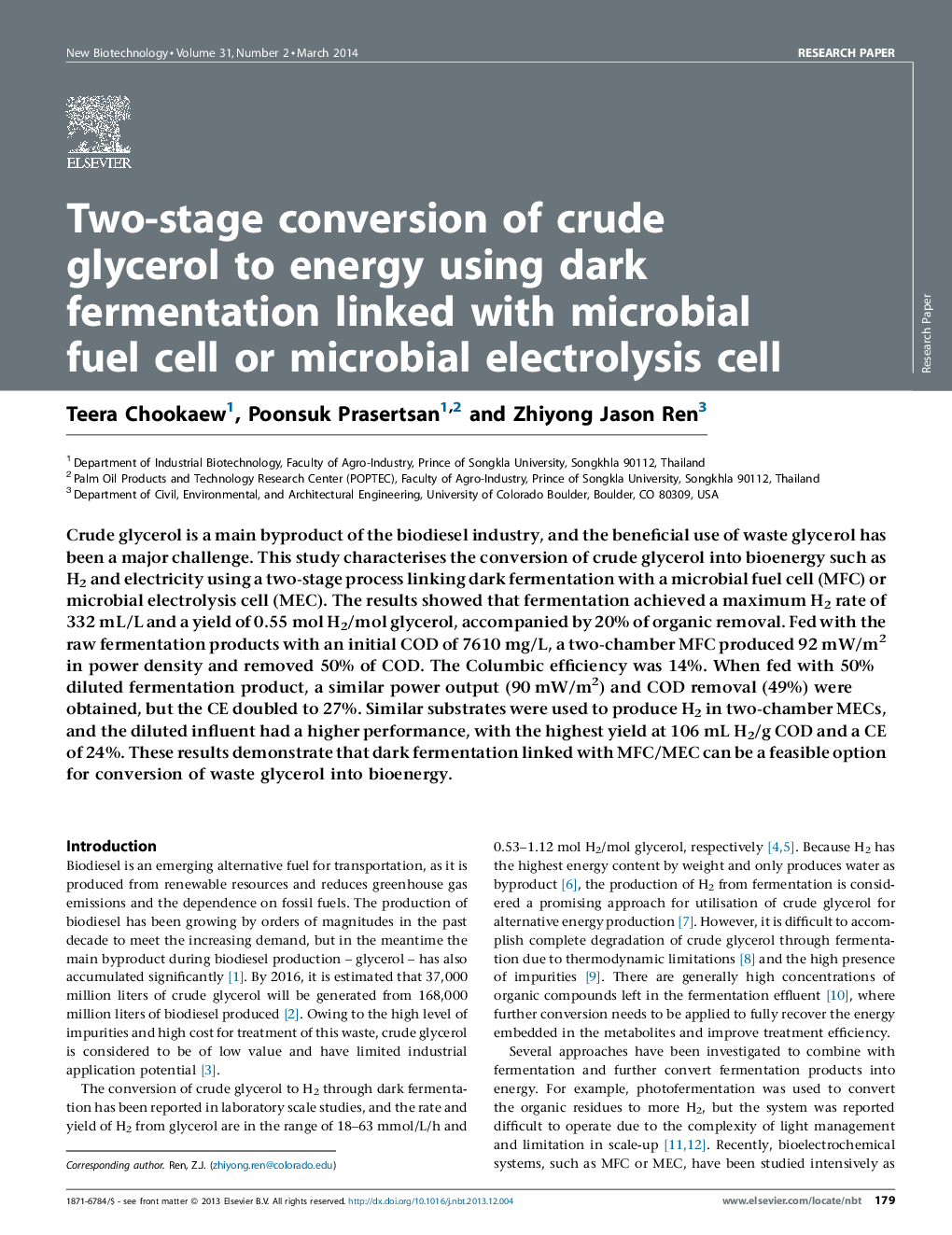| کد مقاله | کد نشریه | سال انتشار | مقاله انگلیسی | نسخه تمام متن |
|---|---|---|---|---|
| 33027 | 44953 | 2014 | 6 صفحه PDF | دانلود رایگان |
• Crude glycerol was converted to energy by connecting dark fermentation with MFC/MEC.
• Dark fermentation obtained high H2 production rate and yield.
• MFCs and MECs produced electricity or H2 using different fermentation metabolites.
Crude glycerol is a main byproduct of the biodiesel industry, and the beneficial use of waste glycerol has been a major challenge. This study characterises the conversion of crude glycerol into bioenergy such as H2 and electricity using a two-stage process linking dark fermentation with a microbial fuel cell (MFC) or microbial electrolysis cell (MEC). The results showed that fermentation achieved a maximum H2 rate of 332 mL/L and a yield of 0.55 mol H2/mol glycerol, accompanied by 20% of organic removal. Fed with the raw fermentation products with an initial COD of 7610 mg/L, a two-chamber MFC produced 92 mW/m2 in power density and removed 50% of COD. The Columbic efficiency was 14%. When fed with 50% diluted fermentation product, a similar power output (90 mW/m2) and COD removal (49%) were obtained, but the CE doubled to 27%. Similar substrates were used to produce H2 in two-chamber MECs, and the diluted influent had a higher performance, with the highest yield at 106 mL H2/g COD and a CE of 24%. These results demonstrate that dark fermentation linked with MFC/MEC can be a feasible option for conversion of waste glycerol into bioenergy.
Journal: New Biotechnology - Volume 31, Issue 2, 25 March 2014, Pages 179–184
